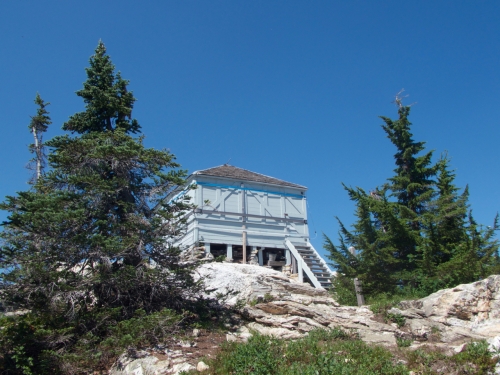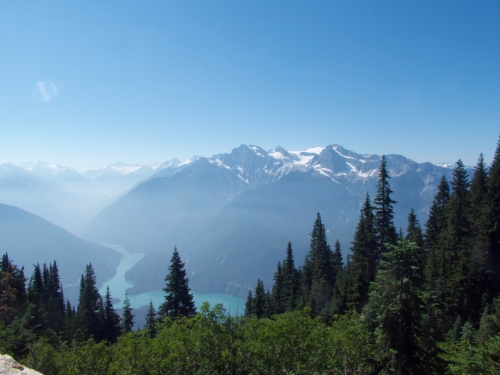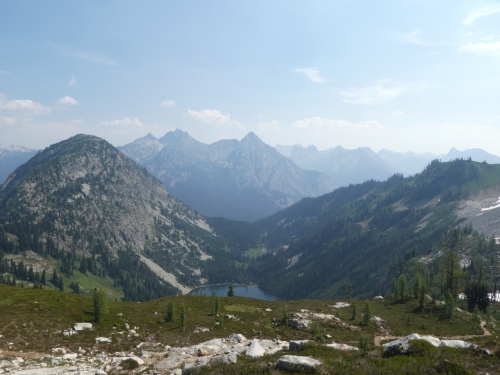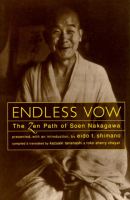The Practice of Solitude
by tendo zenji

Religious practice in America is essentially, I’d argue primarily, a social endeavor. Contemplative practices in contrast is a solitary practice. Even when you are siting shoulder to shoulder in the zendo, you are sitting alone. This tension between an essentially solitary practice and the American social club model pervades Zen centers. This emphasis on the group is so pervasive that it is common to encounter those that can only sit in the zendo, who are not able (or willing) to sit on their own. Considering that the essential practices are inherently solitary that orientation severely compromises ones practice.
Beyond though simply turning inward in our practice, being solitary, there is the practice of Solitude. This is an absolute core practice in my view and one well worth pursuing. In this talk we will contemplate this practice and it’s pursuit.

Throughout Chinese history, there have always been people who preferred to spend their lives in the mountains, getting by on less, sleeping under thatch, wearing old clothes, working the higher slopes, not talking much, writing even less—maybe a few poems, a recipe or two. Out of touch with the times but not with the seasons, they cultivated roots of the spirit, trading flatland dust for mountain mist. Distant and insignificant, they were the most respected men and women in the world’s oldest society.
No explanation has ever been offered or demanded for the admiration the Chinese have had for hermits. Hermits were simply there: beyond city walls, in the mountains, lone columns of smoke after a snowfall. As far back as records go, there were always hermits in China.
– Bill ‘Red Pine’ Porter , Road to Heaven, p. 12
In Road to Heaven Red Pine encounters more Taoists than Ch’an monks and while their approach and orientation is different they come from the same place. They are rooted in the cosmology that has informed Chinese religious practice for thousands of years. Before Buddhism before Taosim this view of reality led some to look inward, to commit completely to understanding. to isolate themselves in mountains
This cosmology as dwelling-place provided the context for virtually all poetic thinking in ancient China. Indeed, it was central to all Chinese culture, for wilderness has constituted the very terms of self-cultivation throughout the centuries in China. This is most clearly seen in the arts, which were nothing less than spiritual disciplines: calligraphers, poets, and painters aspired to create with the selfless spontaneity of a natural force, and the elements out of which they crafted their artistic visions were primarily aspects of wilderness. It can also be seen, for instance, in the way Chinese intellectuals would sip wine as a way of clarifying awareness of the ten thousand things by dissolving the separation between subject and object, or tea as a way of heightening that awareness, practices that ideally took place outdoors or in an architectural space that was a kind of eye-space, its open walls creating an emptiness that contained the world around it. There is a host of other examples, such as the ideal of living as a recluse among the mountains, or the widespread practice of traveling in areas of particular natural beauty, which generated an extensive travel literature. And as we shall see, meditation was widely practiced as perhaps the most fundamental form of belonging to China’s wilderness cosmology.
David Hinton in Mountain Home
Solitary practice v. Solitude
Sitting on ones own, individual sitting is an essential practice, one that all followers of the way to cultivate. Ultimately we are always sitting on our own. But solitude is a practice of letting go, of abandoning the outside world and turning inward to our Original Nature. Consider this passage from Krishnamurti:
J. Krishnamurti On Loneliness – the issue of escape.
“Have you ever tried to be alone? When you do try, you will feel how extraordinarily difficult it is and how extraordinarily intelligent we must be to be alone, because the mind will not let us be alone. The mind becomes restless, it busies itself with escapes, so what are we doing? We are trying to fill this extraordinary void with the known. We discover how to be active, how to be social; we know how to study, how to turn on the radio. We are filling that thing which we do not know with the things we know. We try to fill that emptiness with various kinds of knowledge, relationship or things. Is that not so? That is our process, that is our existence. Now when you realize what you are doing, do you still think you can fill that void? You have tried every means of filling this void of loneliness. Have you succeeded in filling it? You have tried cinemas and you did not succeed and therefore you go after your gurus and your books or you become very active socially. Have you succeeded in filling it or have you merely covered it up? If you “have merely covered it up, it is still there; therefore it will come back. If you are able to escape altogether then you are locked up in an asylum or you become very, very dull. That is what is happening in the world.
Can this emptiness, this void, be filled? If not, can we run away from it, escape from it? If we have experienced and found one escape to be of no value, are not all other escapes therefore of no value? It does not matter whether you fill the emptiness with this or with that. So-called meditation is also an escape. It does not matter much that you change your way of escape.
How then will you find what to do about this loneliness? You can only find what to do when you have stopped escaping. Is that not so? When you are willing to face what is – which means you must not turn on the radio, which means you must turn your back to civilization – then that loneliness comes to an end, because it is completely transformed. It is no longer loneliness. If you understand what is then what is is the real. Because the “mind is continuously avoiding, escaping, refusing to see what is it creates its own hindrances. Because we have so many hindrances that are preventing us from seeing, we do not understand what is and therefore we are getting away from reality; all these hindrances have been created by the mind in order not to see what is. To see what is not only requires a great deal of capacity and awareness of action but it also means turning your back on everything that you have built up, your bank account, your name and everything that we call civilization. When you see what is, you will find how loneliness is transformed. ”
-Excerpt From On Loneliness by J. Krishnamurti in First and Last Freedom.
It is this perspective that is the practice of solitude. You aren’t lonely in true solitude, because there is no self to be lonely there is only what is. The issue of escape here is also worth noting. In Krishnamurti’s view all activities that we undertake are undertaken by the self and thus are self-defeating. Ch’an of course acknowledges this, notes that all of our practice, even mediation, is upaya, a skillful use of the self to get past the self. Krishnamurti is far more radical, simply telling us to see what is.
This shows us the way to the practice of solitude: letting go of our distractions, our escapes. Turning our back on civilization.

The Practice of Solitude
How then do we practice this? In general there is no guidebook, no practice program.. In general there are more warnings, than guidelines. There are concerns of escape, issues of arrogance, of not coming down from the mountain, of eschewing our great vow. In essence the practice is simply a letting go of everything. It doesn’t have to be forever, it can be for one day every so often. Spend the day in solitude. Spend a week in solitude. Spend a lifetime in solitude.
So we turn to examples, which is so often what the practice has to offer. The Buddhas and the patriarchs are examples of those far along the path. The icon of the buddha reminds us that this is possible. The Chinese hermit-monks are exemplary in showing, not telling us this path. The great documentary Amongst White Clouds, is an apt demonstration.
“They turn their backs on comforts and conveniences and entertainment. To return to something more basic. A calm and peace they trust lays at the true heart of human nature.” – narrator
“The key to this is sitting meditation. After sitting then go to bed. Wake in the morning and sit some more. Most of the hermits already understand the practice methods and they don’t make mistakes. If you have this foundation then you can live in the mountains. But you must understand the practice. If you don’t understand, in the mountains, you’l go astray and that’s nothing but torture. Just torture.”
The filmmaker and narrator of this documentary is a practitioner himself who came to the practice through very romantic ideals common in the young. He had genuine questions and was serious as well as being a talented filmmaker. He could see the orientation of these recluses even if his understanding of what drew them there was limited.
This is followed by an excerpt from a talk that the narrators teacher gives on mountain practice. He talks of having had a heated bed when he first came to the mountains but that it is unnecessary. In the quoted text he notes that there is preparation one has to have to undertake this practice. It is arduous and demanding and is not a romantic jaunt into the mountains. It isn’t “glamping”.
Narration:
“What wisdom is there in solitude? What changes in a person living so close to birth and death in nature? Do I feel myself in this?Are we somehow different from this old tree? Dying to be reborn? This life, this struggle, but something in this nature, something in us all. A calm and clarity in the face of change and uncertainty.”
“’Ten thousand things, all in this breath…’ why are people in this world so busy? just for this one breath. They say, “busy, busy, mine mine…”, busy a whole lifetime for “Me”. When this breath is cut off you let go of the whole universe. Why not let go from the start?”
The second quote here has always struck me from when I first watched this documentary over a decade ago. This really is the essence of the practice in a few sentences. The documentary is filled with wisdom from this recluses and is well worth spending time with.
Attachment to solitude
Since like some many Ch’an practices, there isn’t so much a detailed description, or a set of guidelines for the practice of solitude, what we mostly find is an orientation and then a discussion of the pitfalls that one can encounter. In the previous section, quote from Amongst White Clouds, the recluses noted the issues of coming to this practice before one is ready. In the biography of the Japanese monk Bassui we see this underscored.
Bassui
There was a monk from Bassiu’s hometown by the name of Tokukei Jisha who had cut himself off from the world, retiring to the mountains, practicing religious austerities for many years. Hearing of this monk, Bassui decided to pay him a visit.”
– Bassui Tokusho, Mud and Water p. 4
Tokukei became a mentor, friend and teacher of Bassui and is a classic example of the hermit tradition in Japan. When he first visits him he asks Bassui why his head is shaved (indicating he is a monk) but he doesn’t wear robes. Bassui at this point really eschewed formal practice and all its trappings. Tokukei could see his immaturity and while they practiced together he said he needed to resolve the great matter and to have it sealed by an awakened master.
Bassui went to see Fukuan Sōki, of Hōunji Temple in Hitachi province, a noted Zen master who had studied in China. Fukuan had a following that numbered about two thousand. Bassui, unimpressed with Fukuan, returned to his hometown and went to see his friend Tokukei. He told Tokukei that he had not got on well with Fukuan and was planning to practice by himself in some isolated mountain retreat. Tokukei, having spent over twenty years practicing austerities in seclusion, had developed a great deal of pride in his practice. This pride became the cause of much of his pain and suffering. He warned Bassui of the dangers of this kind of seclusion before fully understanding “the great matter” or receiving the transmission from a true teacher. Though Bassui had received verification from Kōzan, he gave up the idea of secluding himself in the mountains in accord with his friend’s advice and instead spent that year in a summer and winter training sesshin with Tokukei.
– Bassui Tokusho, Mud and Water p. 5 and 6
Here we can see Tokukei outline these pitfalls of these practices. Just like the recluse from Amongst White Clouds who said that being in the mountains before one is ready is “torture,” Tokukei is warning that if one does make it as a recluse this can lead to pride and arrogance. This he said leads to pain and suffering. Solitude as a practice can be explored and be very fruitful in short stints but to undertake it long term, you need to be prepared.
It was around this time that Bassui built his first hermitage in Nanasawa in his home province, Sagami. Tokukei came to visit him there, and this time he seemed pleased with Bassui’s decision to retire to a hermitage to continue his practice. He seemed to be telling Bassui that since he now had met both requirements—having clarified the Way and having received verification from a true teacher—he was ready to undertake this kind of practice.
– Bassui Tokusho, Mud and Water p. 7
Bassui now is ready for this practice and it is appropriate to do so. In fact one often feels drawn to seclusion, to focusing purely on deepening ones insight after one has awakened. Hakuin talks of this and of course it comes up in the Chinese hermit tradition. This is not a romantic notion of seclusion at this point, but the next logical step in ones practice.







